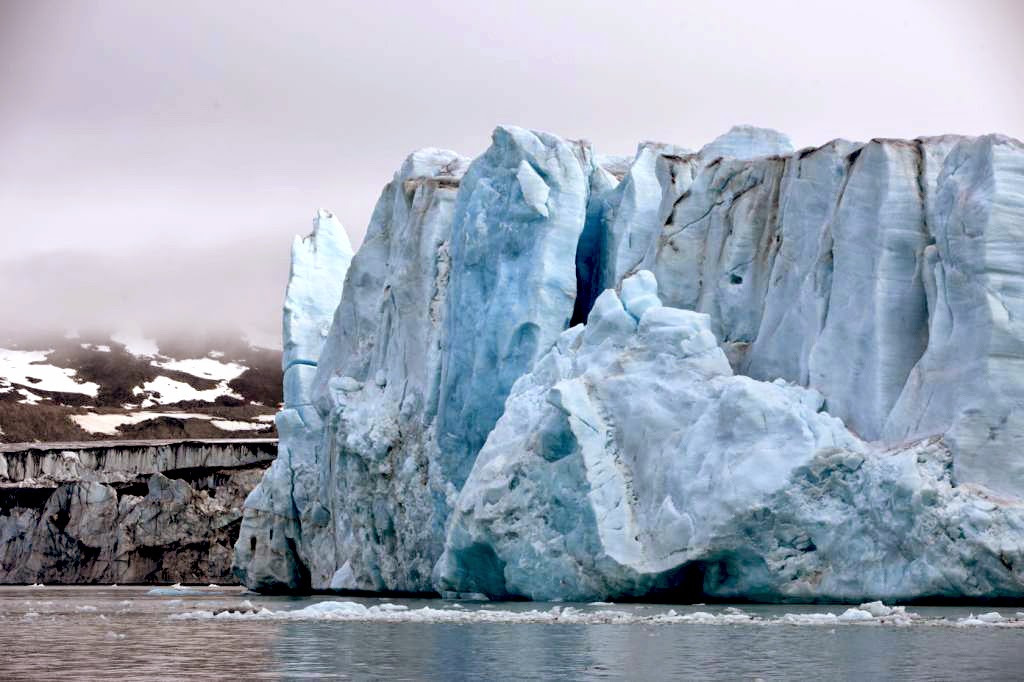Dead Reckoning might be referred to as a continual calculation that determines the position, orientation and velocity of a moving object. Or Dead Reckoning could be looked upon as an art form, some old soul who understands how to get from A to B with a simple plotting chart, compass, clock and a pencil. You may have guessed it,
Dead Reckoning is a navigational term known to sailors.
Dead Reckoning is also the new film title by contemporary artist
Rori Knudtson, now in production and set for a 2016 release. Rori serves as the writer and global dot connector featuring a happenstance crew posing as the last known artists on the planet during a sailing voyage around the desolate, while beautiful, Svalbard Islands in Norway, Earth’s northernmost locale and polar bear realm.
SynopsisDead Reckoning follows four individuals briefly in their everyday lives as they approach the arrival to a ship off date for a voyage around the Svalbard archipelago under the premise that they are the last artists on Earth. They are to each create something to be stored in the Svalbard-based
Global Seed Vault for 1,000 years. As they prepare to set sail, we learn that the three men and one woman are all connected to the main industries of
Svalbard, the northernmost Arctic human settlement on the planet.
Each character holds a very affected relationship with Svalbard and is essential to their art making. Each character will supply a freshened perspective, as past histories of the region participating in the world’s quest for more fuel and the desires of science to configure better understanding about climate change have been in full affect. (Above, photography
Mike Reyfman).
Interestingly enough, Svalbard is also the essential location for the Global Seed Vault, a buried storage receptacle featuring every species of seed-producing plant life on Earth. Opened in February of 2008, the Global Seed Vault and Conservationist
Cary Fowler will also be featured. (Stay tuned for the opening of
Seeds of Time opening in theaters in May, 2015). (Above, Cary Fowler and the makings of the
Global Seed Vault).
Rori’s crew will navigate the island seas by boat testing their mediums while providing glimpses of regional challenges and directly paralleling the world’s anxieties including: economic stability, geographic pressure and climate change.
The film’s narrator provides a history of Svalbard’s early history that includes early Viking expeditions in the 12th Century and the first recorded Dutch voyage, (Originally explored by
Willem Barentsz, 1550-1597, who was searching for the Northeast passage which later lead to whale hunting in the region). (Above,
Death of Willem Barentsz by Christiaan Julius Lodewyck Portman, 1836).
Dead Reckoning begins when Rori Knudtson’s cast of characters land in Longyearbyen, the point of entry into Svalbard. Longyearbyen was founded by American mining and timber developer
John Munro Longyear who opened the Arctic Coal Company on the island of Spitsbergen in the early 20th Century. This led way to mining oil from the vast oceans in this terrain in the mid-20th century.
The film progresses and introduces the viewer to the heroic polar expeditions of Norwegians
Roald Amundsen and Fridtjof Nansen—making it to both the South Pole and North Pole. Nansen won the Nobel Peace Prize in 1922.
Dead Reckoning also retraces the steps of
Geir Åsebøstøl, who worked for the
Norwegian Polar Institute and passed away suddenly two years ago from a chronic heart condition. Geir had documented 30 years worth of footage of the Norwegian Arctic changes. His vision will be celebrated in the film.
We’re also introduced to artist
David Buckland’s Cape Farewell project that reignited the prevalence of artists and scientists voyaging together in the Arctic extremes in the beginning of the 21st Century. We realize that the layers of creating in and about this landscape have been touched even before we arrived here for this film.
Stay tuned for more information about
Dead Reckoning, a new documentary film project imagined by contemporary artist Rori Knudtson and generously funded by the
Royal Norwegian Ministry of Foreign Affairs.












